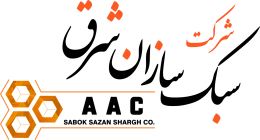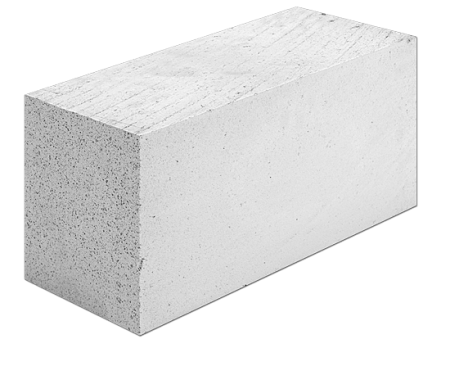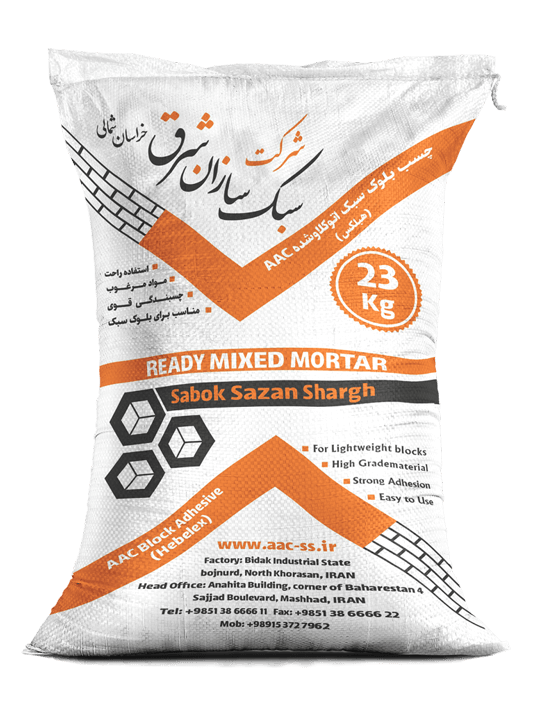AAC
AAC stands for Autoclaved Aerated Concrete and is used to build walls and floors. In terms of its nature, it is a concrete product that is obtained by baking a mixture of cement, silica or silica sand, lime, aluminum powder and water at high pressure and temperature. From a physical point of view, it is solid, inelastic and porous, and its density is lower than water. It is grayish-white in color and has somewhat malleable properties. This product has unique properties such as low density, heat insulation and sound insulation, all of which are derived from the porosity of this product.

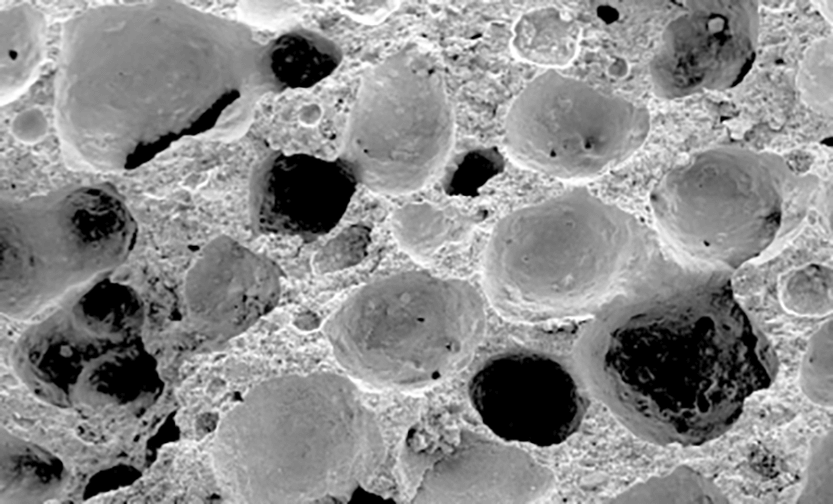
Due to the use of new technologies in creating unique (cellular) porosity in the production of autoclaved aerated concrete, the produced product is very light (almost half the weight of water). This means reducing the weight of the building or reducing the dead load, which will result in reducing the cross-section of the skeleton and more resistance of the structure against the destructive force of the earthquake.
The produced product is light weight, resistant and durable and will have a very long life. For more than half a century, lightweight autoclaved concrete has been used in structures built in different climatic regions of the world, which is a result of the excellent mechanical properties of this product.
The strength and resistance of this product is the result of the air holes being covered by calcium silicate and produced under a pressure of about 12 atmospheres.
This product was invented by a Swedish architect named Axel Erickson in 1923, and since that date, there have been many changes in the production methods and the way air bubbles are produced. The life of buildings built with this product in Europe is more than 80 years.

Sheb Sazan Shargh is the only company with the ability to produce AAC light blocks in the density category of 350-450 kg/m3 in Iran.
Style Sazan Shargh company has the ability to change the size of the products as well as the technical specifications at the customer’s request.
AAC adhesive
Autoclaved aerated concrete (AAC) cement-based adhesive is suitable for connecting light wall blocks that have high water absorption. Low amount of consumption, no wastage of glue, easy preparation and use, high strength and resistance, moisture resistance are the unique properties of this glue and it does not need to add any other additives except water.
Note: This glue can be used to fill and repair damage to the blocks during execution and strapping to achieve a stronger and more uniform wall surface.
packing
It is available in 23 kg laminated bags.
Properties and characteristics of AAC adhesive:
- High resistance to moisture and water
- Excellent surface adhesion
- Proper timing for gluing block parts
- Quick and easy to prepare
- Low consumption and cost-effectiveness
- High strength and resistance to impact
- Block adhesive eliminates the thermal bridge of cement sand mortar and speeds up the installation of parts
- The amount of consumption of this product is much less compared to similar items in the market, so that one cubic meter of block can be executed with each glue packet.
Method of Use
1) Gradually add the glue powder to the water in a clean container and stir thoroughly. (If possible, use an electric mixer)
2) The mixing ratio is 6 liters of water with 23 kg of glue powder. (It should be noted that depending on the humidity of the area and the temperature of the environment, this ratio can be changed to a maximum of plus/minus 2 kg of adhesive powder, so continue adding the adhesive powder to the water until it reaches a paste-like (fluid) state. Obviously, the thin form of mortar, or the so-called slurry or very hard, is not approved.
3) After complete mixing, wait for about 5 minutes and then stir the mixture for about 1 minute to reach the final shape of the ready mortar.
4) The suitable temperature for preparing and using ready mortar is 10 to 35 degrees Celsius. Based on this, the consumption time after mixing is maximum 2 hours.
5) When a uniform mortar is obtained, spread it with a trowel on the horizontal and vertical surface of the AAC block that has been cleaned and moistened with a thickness of about 2 to 3 mm and stick the block pieces.

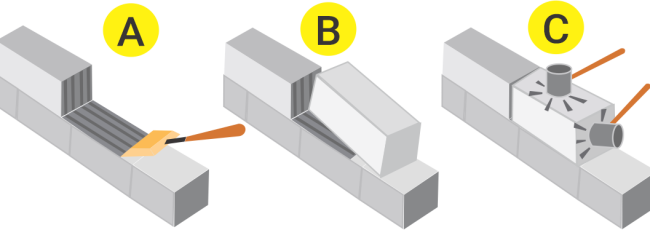

Metal fittings
90 degrees flexible fastener:
Application: to restrain the wall to the structure.
Indications for use: Connecting the internal and external walls to the concrete wall and column
Shutter connections:
Application: To connect the blocks more firmly to each other
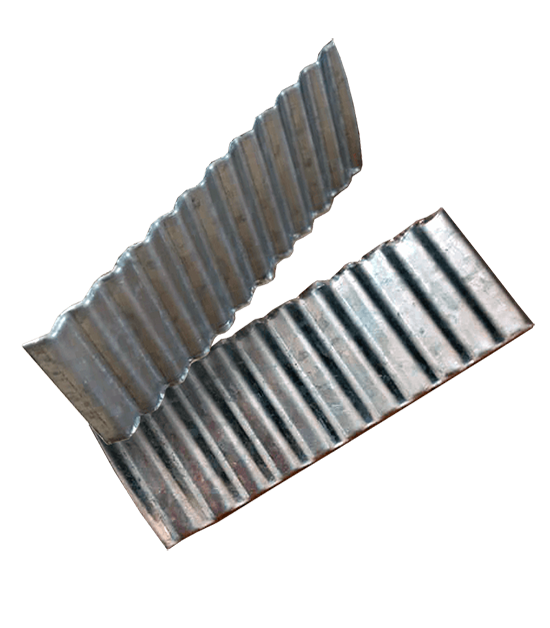
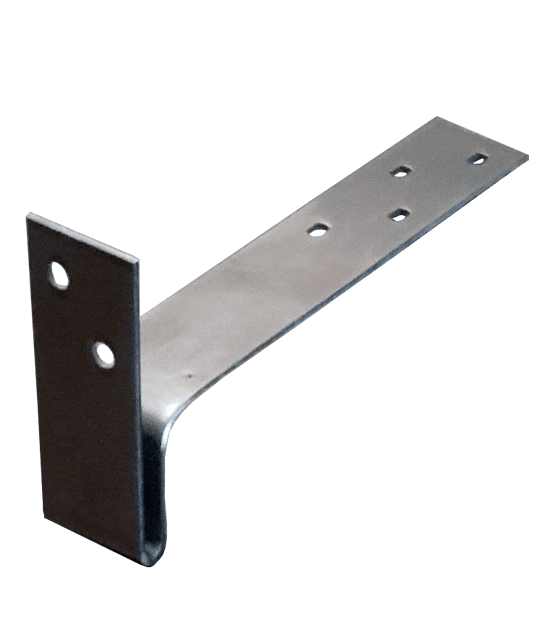
Factory address: North Khorasan, Bojnord, Bidak Industrial Town, Sanat 9
Head Office: Mashhad, Sajjad Blvd., Baharestan Corner 4, Anahita Building
Tel: Fax: +9851-38666611 Mobile: +9851-38666622 09153727962
